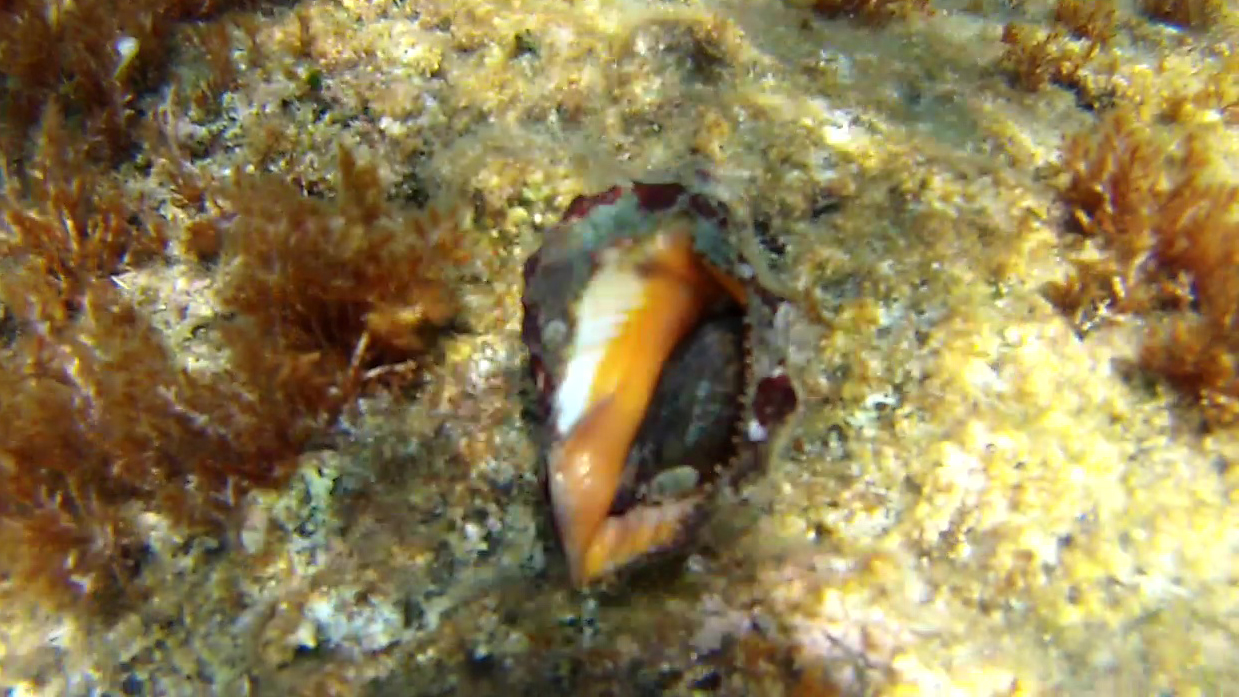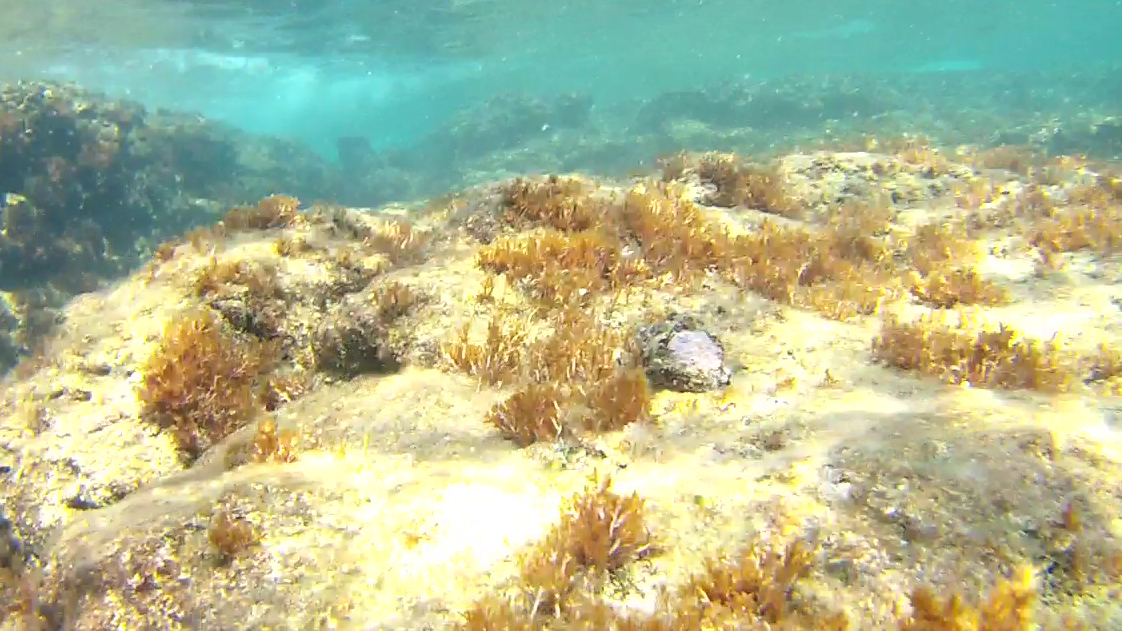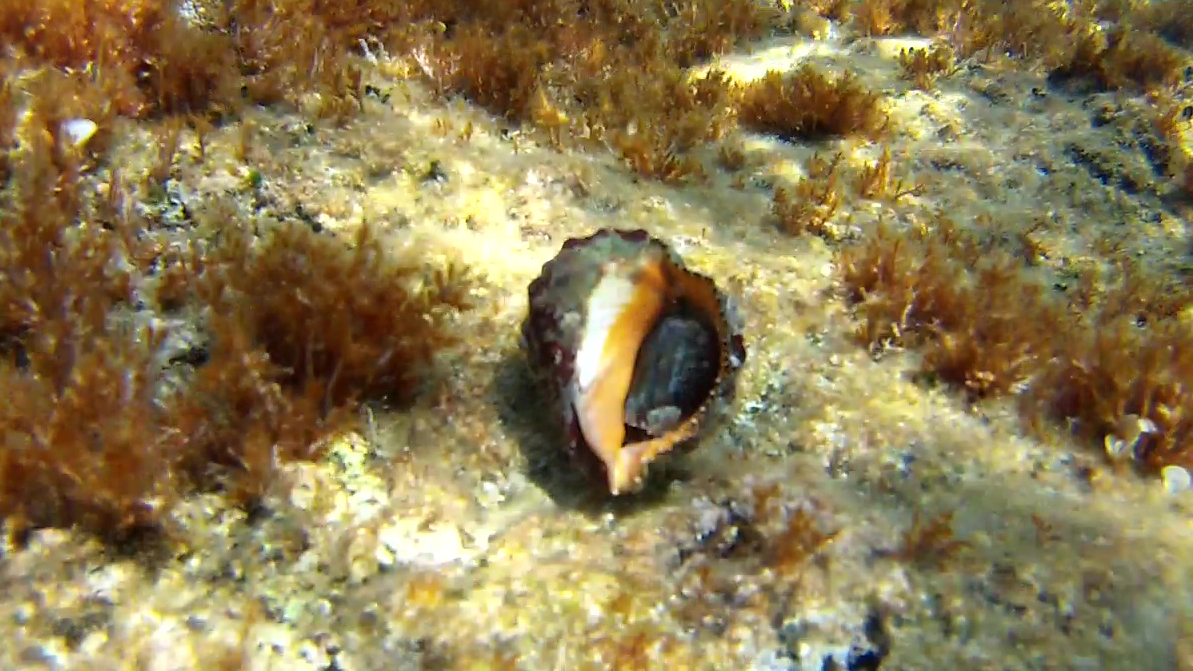Red-mouthed rock shell - Muricidae - Stramonita haemastoma
Stramonita haemastoma, common name the red-mouthed rock shell or the Florida dog winkle, is a species of predatory sea snail, a marine gastropod mollusc in the family Muricidae, the rock snails.

The red-mouthed rock shell occurs widely in tropical and warm water areas of the Western Atlantic Ocean. Regions where it can be found include the Caribbean Sea, North Carolina and Florida, Bermuda and the entire Brazilian coast, including the islands of Abrolhos and Fernando de Noronha. It is also found in the Eastern Atlantic: tropical Western Africa and Southwestern Africa, including Cape Verde and Angola, and in European waters, including Macaronesian Islands, the Mediterranean Sea and the southwest coast of Apulia. Canary Islands. Its once abundant population in the Eastern Mediterranean collapsed early in the 21st century and had entirely disappeared by 2016.

Feeding habits
Stramonita haemastoma is a widespread gastropod that consumes bivalves, barnacles and limpets. In the Mediterranean Sea the whelk is an important predator of the bivalve Mytilaster minimus, but where the invasive Lessepsian migrant bivalve Brachidontes pharaonis is found, the whelk prefers to prey on that species over the native bivalves and barnacles. Through feeding behaviors such as attacking the margin or lip of shells where defenses are weakest, Stramonita haemastoma insert its proboscid between the valves injecting proteolytic enzymes and a toxin that causes bivalves to gape.
Human use
The shell was one of two principal sources of Tyrian purple, a highly prized dye used in classical times for the clothing of royalty, as recorded by Aristotle and Pliny the Elder.
As ancient dye
The purple dye originated in Phoenician colonies. The Phoenician port cities on the coast of current-day Lebanon, exported the dye across the Mediterranean.
https://en.wikipedia.org/wiki/Stramonita_haemastoma

Carthaginian Murex pigment from Tunisia
The ancient method for mass-producing purple-blue dye from Hexaplex trunculus has not been successfully reproduced; the purplish hue quickly degrades, resulting in blue only. Nonetheless, archeologists have confirmed Hexaplex trunculus as the species used to create the purple-blue dye; large numbers of shells were recovered from inside ancient live-storage chambers that were used for harvesting. Apparently, 10- to 12,000 murex yielded only one gram of dye. Because of this, the dye was highly prized. Also known as Royal Purple, it was prohibitively expensive and was only used by the highest ranking aristocracy.
A similar dye, Tyrian purple, which is purple-red in color, was made from a related species of marine snail, Murex brandaris. This dye (alternatively known as imperial purple, see purple) was also prohibitively expensive.
Jews used the pigment from the shells to create a sky-blue, tekhelet, dye to put on the fringes that the Torah specifies for the corner of the prayer shawl. There are many opinions about how the tzitzit are tied. This blue dye was made by taking the yellow dye solution and letting it sit in the sunlight, and then dipping the wool in it. This dye was lost to history until it was rediscovered by Professor Otto Elsner of the Shenkar College of Fibers in Haifa. Since then, it has been re-introduced as the authentic ticheiles and has once again been reenstated to the Jewish garment although only with limited acceptance.
https://en.wikipedia.org/wiki/Hexaplex_trunculus
